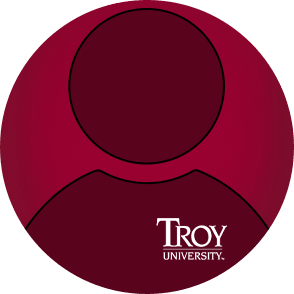A Forward-Looking Electronics Engineering Curriculum
Hands-On Engineering Experience Before You Graduate
This engineering program is built around learning by doing. In your classes and labs, you'll take on real projects like building circuits, creating prototypes and troubleshooting electronic systems. You'll learn how to use the same tools professionals use and apply your skills through two capstone projects that tie everything together. You can also explore internships and connect with industry partners, giving you a clearer picture of what careers in electronics engineering look like, whether you're interested in becoming a controls engineer, systems analyst or working in renewable energy infrastructure. These practical, hands-on experiences will make it easier to transition into fast-paced, problem-solving environments and stand out when it's time to compete for engineering jobs in Alabama and across the country.
Electrical Engineering Curriculum
Electronics Engineering Locations
Benefit from in-person classes on the Troy Campus with direct access to faculty, labs and a collaborative environment. For more information about program availability and delivery options, call 1-800-414-5756.
Learn from Researchers with Real-World Experience
At TROY, you'll learn alongside faculty who know what it takes to succeed in today's engineering careers. They bring real industry experience to the classroom — from working on advanced radar and electronic warfare systems with the U.S. Navy to developing communications technology at Lockheed Martin. They also stay current with the latest developments in electrical, electronics and technology engineering. Their top priority? Helping you build the skills, knowledge and confidence to grow as a thinker, problem solver and future engineer. Through their mentorship, you'll connect classroom learning to real-world projects, roles and opportunities in the profession. With their support, you'll take on complex challenges, ask better questions and develop a mindset that helps you stand out in engineering jobs in Alabama — or wherever your career takes you.

Careers with the TROY Electrical and Electronics Engineering Degree
Earning your bachelor's degree from TROY prepares you for a wide range of engineering roles. Whether you want to become an electrical systems engineer, work in emerging technologies or continue your education at the graduate level, TROY will help you achieve your goals. This degree also supports careers in fields like automation, telecommunications and electronics and technology engineering. The job outlook is strong, and the electronics engineering salary potential is high — with median earnings topping $127,000 annually, according to the U.S. Bureau of Labor Statistics.
Faculty Profiles
Engineering Scholarships
Funding Support for Future Engineers
You may be eligible for awards like the Electronics Engineering Technology Endowed Scholarship, which support your goals and recognize the effort you're putting into your degree at TROY.
Related Programs
FAQ About the Electronics Engineering Program
Electrical engineering focuses on large-scale systems like power generation, transmission, distribution and motor control. Electrical and electronics engineering builds on that foundation by adding smaller, more complex systems such as electronic circuits, embedded systems, sensors and communication technologies.
With an electronics engineering degree from TROY, you'll be prepared to work across both areas. The electrical and electronics engineering program gives you flexibility to pursue careers in energy, automation, telecommunications and semiconductor technologies.
Electrical and electronics engineering focuses on systems like electronic circuits, embedded devices, control systems and communication technologies. Mechanical engineering centers on mechanics, thermodynamics, fluid dynamics and structural design.
If you're more interested in electronics, energy systems, automation and technological innovation, an electrical and electronics engineering degree from TROY may be a better fit for your career goals.
The Bachelor of Science in Electrical and Electronics Engineering at TROY prepares you for in-demand electronics engineering jobs in automation, telecommunications, semiconductor manufacturing, renewable energy and more. Graduates often work as an electrical systems engineer, electronics design engineer, embedded systems engineer or control systems engineer, contributing to technologies that power and shape the future.
By choosing TROY's bachelor's degree in electrical and electronics engineering, you're making a smart career decision. Employment for electrical and electronics engineering professionals is projected to grow 9% through 2033 — much faster than average — due to demand in areas like telecommunications, renewable energy and advanced electronics systems. According to the U.S. Bureau of Labor Statistics, the median annual salary for electronics engineering professionals is over $127,000, with earnings increasing as you gain experience and specialize.
Yes. Alabama is home to leading employers like Lockheed Martin, Alabama Power, Honda Manufacturing and Raytheon Technologies — all of which seek skilled professionals in electronics engineering, specifically. Whether you're interested in circuit design, automation or power systems, you'll find opportunities across industries in cities like Huntsville, Birmingham and Montgomery. TROY's degree in electrical and electronics engineering helps you build the skills and experience you need to launch and grow your career here.



